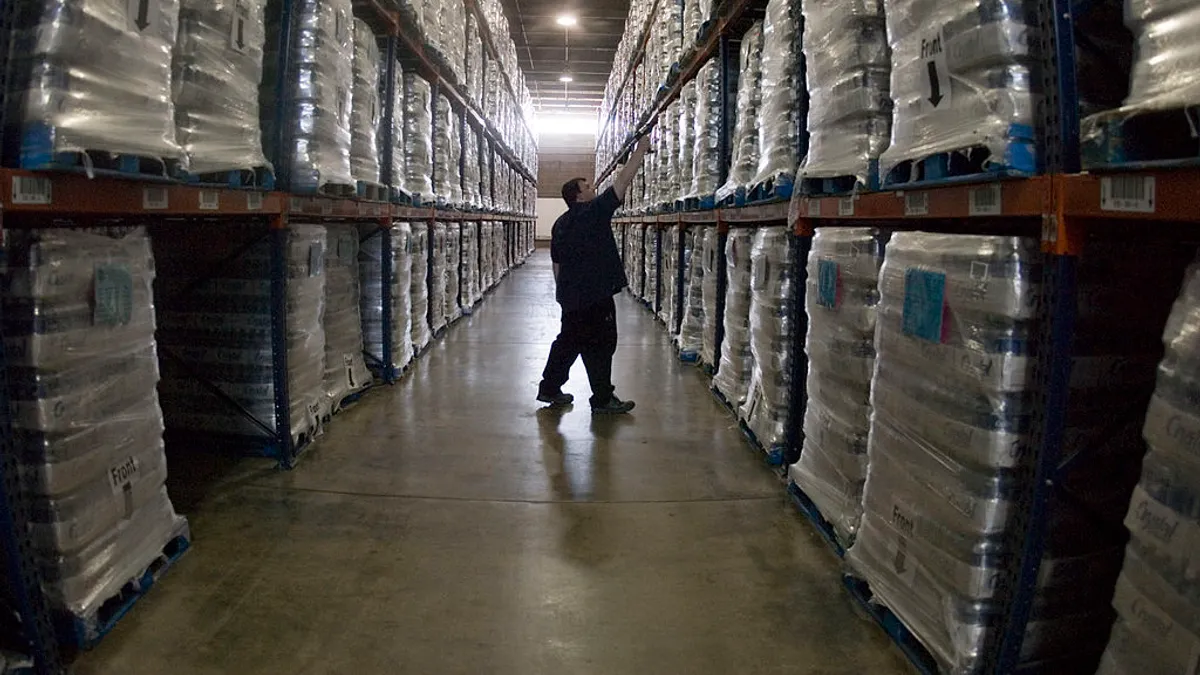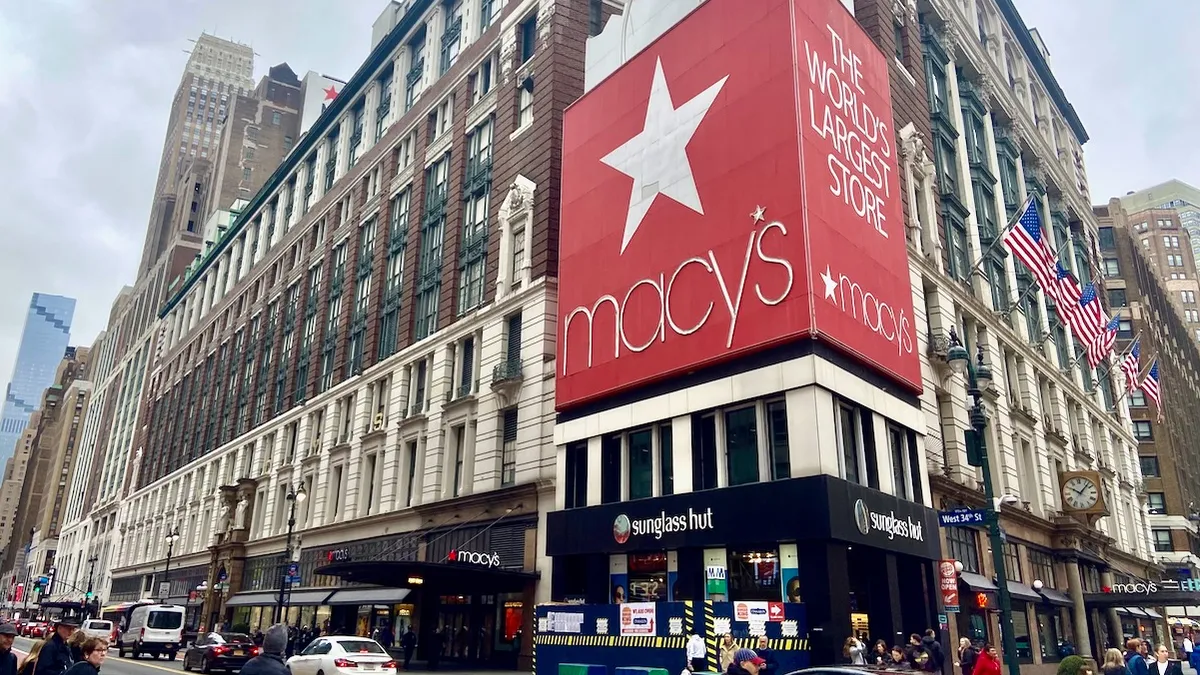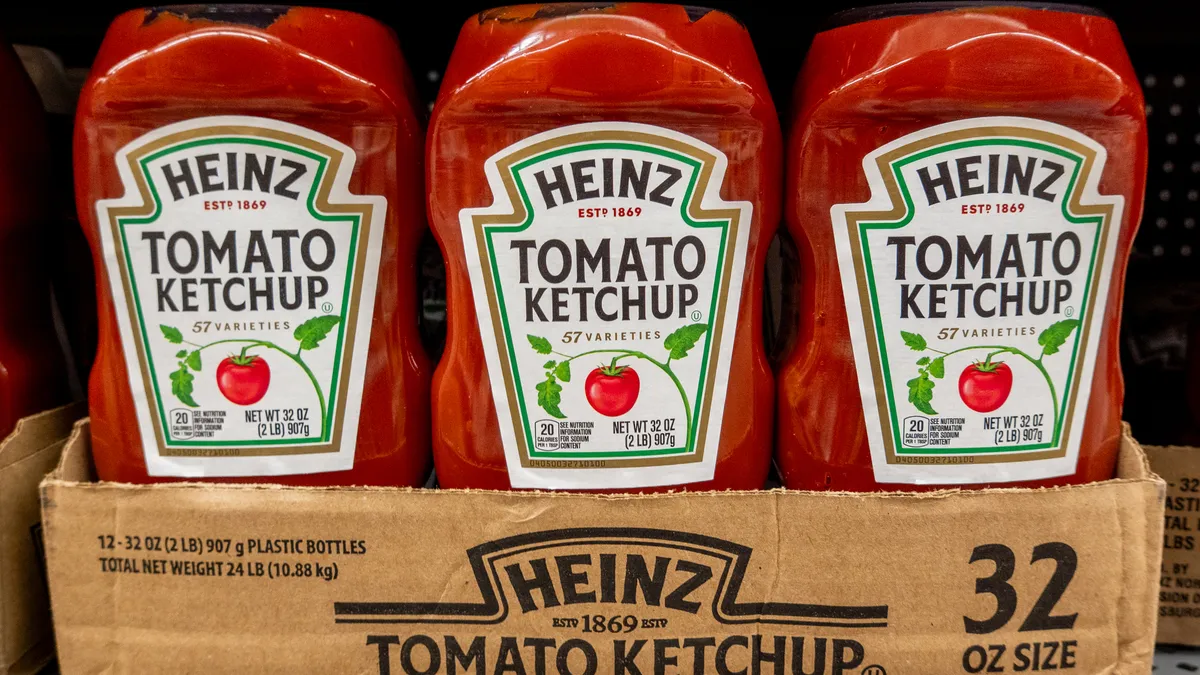Supply chains are constantly changing as new rules, technologies, resources and market trends transform operations. Here's a skim of the week's indexes, technology announcements, expansions and M&As from around the web.
In Case You Missed It
- Glassdoor listed supply chain management as the 18th best job in the U.S.
- A new study aims to argue wind power is the fuel of the future for boats.
- A theory: product waste starts at procurement and does not end at fulfillment.
Market Snapshot
Despite concerns over trade policy, U.S. companies continue to see global integration as a top business priority for their supply chains. Roughly 33% of respondents in DHL's 2017 Customer Survey, conducted after the election in November, said Asia was top of mind, while another 28% said Europe was the top priority, Logistics Management reports.
Meanwhile, a recent Al Masah Capital report reveals the global logistics market is expected to reach $15 trillion by 2024, Trade Arabia reported. The third party logistics market will additionally grow by a compound annual growth rate of 5% until 2020, according to the report.
Data from the International Air Transport Association appears to support this claim, as global air freight ton kilometers grew by 3.8% last year, The Loadstar reports. The figure is particularly promising for the sector, considering freight ton kilometers have grown by an average value of roughly 2% over the past five years.
Various factors play into global logistics growth measures, but at the end of the day logistics is in the business of transporting manufactured goods. While previous reports have indicated concern over declining trade volumes, various others show signs are pointing upward — at least in the United States.
The Institute for Supply Management's (ISM) monthly ISM Manufacturing Report on Business revealed the purchasing managers index, which measures manufacturing activity from production to shipments and inventory, was at its highest rate this January since November 2014, The Wall Street Journal reports.
The strong start to 2017 follows a trend of industry expansion, in fact the 92nd straight month of economic expansion, according to the index. One respondent told ISM "no current effects of geopolitical changes appear to be penetrating market conditions," as 12 of the 18 sectors measured showed signs of growth. Meanwhile, inventory levels are still contracting — at all levels of the supply chain — as they have been for the past 19 months, and production is growing at a rate of 2%, according to the report.
In other news, DC Velocity reports that when it comes to the spot truckload market, Atlanta, GA leads the pack, although Little Rock, AR tops the list in flatbed transport.
Technically Speaking
Digitization is in the air, or maybe in the water, as it seems to be catching on rapidly at every stage of the supply chain. The concept takes many forms, of course, but the ends are the same: leverage technology to bring in more data, and take action more efficiently.
At the retail level, a recent survey reveals that after a decade of hype, apparel companies are finally looking to reach 100% RFID implementation to better track their inventory and store product data. While only 4% of respondents had the technology available, the other 96% were in "some stage of deployment" for the technology.
Meanwhile, the Internet of Things appears to be taking hold at the manufacturing and packaging stages as well. The demand for full-chain visibility is encouraging manufacturers to employ remote monitoring devices, in efforts to better measure product quality and improve analytics capabilities.
Perhaps the stage with the greatest opportunity for digitization, however, is logistics. The CEO of the International Airlines Group told The Loadstar the air cargo industry must digitize, as the amount of paper transferred and required for daily processes is "bordering on the criminal."
The opinion is seemingly widespread, however. In a recent report, Freightos revealed 62% of surveyed freight forwarders believe digitization is an opportunity for the industry, while only 15% of them consider it a threat. Shippers likely believe the same: after all, another Freightos report found that, of the top 20 freight forwarders, only one was able to provide a quote instantly, online, and less than half of them were able to provide a quote online at all.
In other major technology trend news, the scale of automation also appears to be increasing. The Robotics Industries Association announced more robots were ordered in North America last year than ever before, for a total of 34,606 orders. As expected, many of these robots were for industrial purposes — that is, inspecting, sorting, packaging or even spot welding — with the food and consumer good industries recording among the highest spikes in orders (32% growth).
However, another type of robot may soon join the fray: the logistics bot. Lawmakers in Virginia are proposing to regulate and allow the public use of a cooler-sized, 22-pound capacity "personal delivery robots" to ease last-mile delivery in the state.
Questions over the applicability of laws governing automobiles to the rolling-robots have delayed their deployment nationwide, and Virginia would be the first state (rather than city) to encourage their use, the Associated Press reports. That is, if the proposed legislation passes.
Breaking Ground
The 2010's may go down in industrial history as the decade of the logistics boom, in no small part thanks to the mega warehouse.
A recent CBRE report found 117 mega warehouses — industrial buildings measuring 1 million square feet, or more — have been built in the U.S. since 2010, for a total of 141.2 million square feet newly on the market. At least another 29 more mega warehouses totaling 31.6 million square feet are currently under construction, too.
Yet, the spoils of growth have not hit the nation evenly: 10 markets have made up roughly 63% of the industrial construction over the past 7 years. Philadelphia tops the list with 16 buildings, followed closely by the "Inland Empire" (Southern California, between Riverside and San Bernadino County) and the Dallas/Fort Worth metropolitan area. Atlanta, Chicago, Memphis, Columbus, Cincinnati, Indianapolis and Phoenix also made the top 10 list.
The surge in mega-warehouse construction is no accident, of course. As online retail sales grow, e-tailers must find a space to store their items. Yet, unlike big box retailers, many e-tailers do not have the inventory needs to rent out an entire warehouse. Consequently, mega-warehouses have risen as an efficient way of managing multiple tenants' needs: brokers lease out portions of a warehouse, with the additional allure of building near major commercial markets (see the top 10) to expedite fulfillment needs.
In fact, the demand for warehouse space in this format was so high that it drove industrial vacancy rates to record lows in various markets over the past decade, sparking a surge in industrial rent, The Wall Street Journal reports. Now, it seems, the supply of industrial space is beginning to catch up with the high demand, per comments to the Journal by Prologis' CEO, although e-commerce sales continue to rise.
However, not everyone is happy with the nationwide growth of warehouses.
To put it simply, warehouses often bring in unwanted truck traffic and, due to efficiency needs, appear as "big boxes" to residents. In just one example, the residents of Portland, ME are reportedly speaking out against a proposed 120,000-square-foot, $31 million warehouse near the port, for fear it would "unduly obscure valuable views and alter the area's character," Maine Public Radio reports. Apparently, the city would need to rezone the area to allow for 75-foot high buildings in favor of the warehouse, a fact that was unknown prior to the building company's bid.
In other news, the Dallas Fort Worth International Airport announced it would add new cold storage facilities to its capacity in order to better serve pharmaceutical, flowers and fresh food cargo clients. The facility will be operated by AirLogistix U.S.A. and help handle the 794,600 tons of cargo that travels through the airport each year.
Similarly, Indiana-based MD Logistics announced it would invest $3.7 million to add cold storage capacity for pharmaceutical clients within its 173,000-square-foot warehouse; and Americold opened a new 260,000-square-foot refrigerated warehouse in East Point, GA.
Mergers & Analysis
General Motors (GM) and Honda are reportedly partnering in an $85 million joint venture to produce electric fuel cells in Michigan. The new company, Fuel Cell System Manufacturing, will be a shared supplier as the companies look to increase their production of electric vehicles. GM's press release highlights this is not the first time the two auto giants have partnered within their supply chains: in 1999 Honda manufactured V-6 engines for GM in exchange for diesel engines from GM's Isuzu affiliate.
Meanwhile, the shipping industry is also looking for more efficient ways to power their vessels, albeit mainly in preparation for increased international regulations on emissions. CMA CGM announced a partnership with similarly France-based oil and gas company Total to make the shipping line's container ships "more environmentally friendly," American Shipper reports.
Speaking of the shipping industry, perhaps the biggest instigator of new purchases, partnerships and industry-uncertainty — Hanjin Shipping — finished its long receivership process this week and will officially declare bankruptcy Feb. 17. (The line's August announcement placed the state-owned company into receivership, wherein the official bankruptcy processes are delayed to maintain the company operational, and is managed by a South Korean Court).
The months-long process led to an industry-wide re-networking of the formerly eighth-largest shipping lines' owned and chartered assets. Two ships were scrapped, 63 idled and others sold. Samra Midas Group and Maersk Line appear to be the biggest winners of the reorganization, as the former acquired five Hanjin ships and the latter took over 11 vessels formerly chartered by Hanjin. The Mediterranean Shipping Company did not lose out either, having obtained nearly-full stake of formerly co-owned Total Terminals International, which operates two terminals in the U.S. West Coast.
In other bankruptcy news, the California Mountain Pass Mine — a major rare earths mine supplying raw materials for the electronics and defense industries — will be auctioned off in March for at least $40 million, according to The Wall Street Journal. The Journal adds the original operator, Molycorp, faced financial difficulties after a shift in Chinese trade policy last year sparked fears of scarcity, leading prices up and the company into bankruptcy.
In another example of financial mismanagement, 3PL Roadrunner Transportation Systems announced this week it would re-report three full years of financial results after an accounting error was discovered, wherein cash and driver receivables were not recorded as expenses. DC Velocity reports the company's stocks fell roughly 12.7% after the announcement.






















